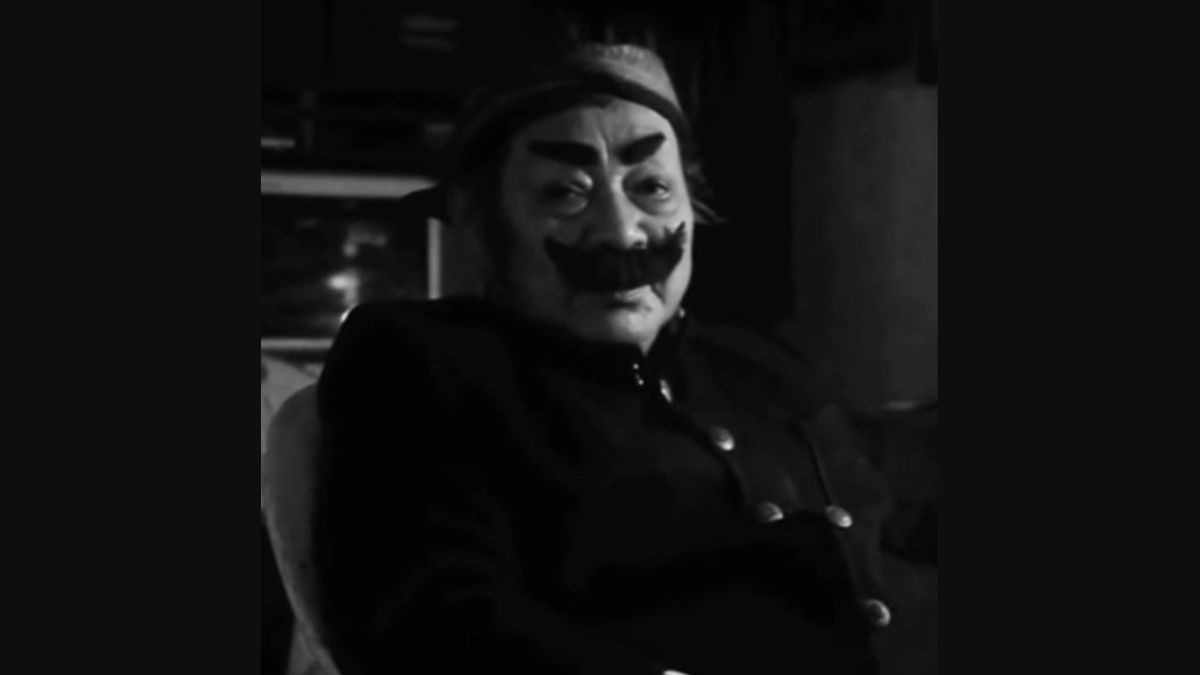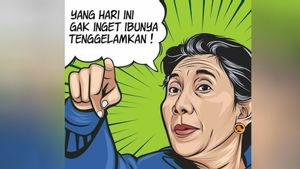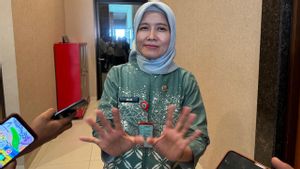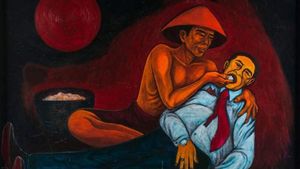JAKARTA - On November 28, 1932 was the birth of Drs. Suyadi or who is familiarly known as Pak Raden in 'Si Unyil.' November 28 is also designated as National Fairytale Day, coinciding with the birthday of Drs Suyadi, because he is a character who is credited with bringing the world of fairy tales to life.
Pak Raden since childhood has shown his interest in the world of pictures. He really likes drawing and is very familiar with colored pencils. Apart from drawing, Pak Raden is also known to enjoy making clay sculptures. Quoting What and Who of a number of Indonesians, Pak Raden aspires to be a puppeteer.
But instead of being a puppeteer, Pak Raden studied at the Bandung Institute of Technology (ITB) majoring in Fine Arts. Pak Raden returned to his hobby of drawing, even during college Pak Raden began to illustrate stories for children. Citing the official ITB website, in 2012 Pak Raden was awarded the Ganesha Widya Jasa Utama award for showing outstanding services and achievements as a pioneer in the Creative Industry Cluster Animation and Animator Figure at the national level.
After learning at ITB, Pak Raden then studied again to complete his illustration technique in France from 1961 to 1963. Citing the Indonesia.go.id website, Pak Raden's curved and smooth lines were slightly influenced by the style of smooth line strokes or 'ligne claire. 'which was popular in the post-Second World War Franco-Belgian sub-culture.
Many know that Pak Raden's timeless work is Si Unyil. Pak Raden succeeded in producing characters that were very embedded in the minds of 80s children, namely Unyil, Pak Lurah, Pak Raden, Pak Ogah, Cuplis, Meylan, Bu Bariah, Criminals, and Crazy People. The shapes of the dolls made by Pak Raden are round, according to the typical anatomical proportions of developing children. Being a hand puppet character that at the beginning of its manufacture was made in limited conditions.
The birth of Si UnyilSi Unyil was first produced by Negara Film Production (PFN) in 1979. Si Unyil was the idea of the Director of PFN at that time, G. Dwipayana. To make the film, Dwipayana took Pak Raden and Kurnain Suhadirman. Pak Raden worked on the puppets, while Kurnain wrote the script for Si Unyil.
Quoting the journal 'Si Unyil Anak Indonesia' by Tito Amanda, in 1980, President Soeharto's administration had just finished with a draft of Guidelines for the Living and Practicing of Pancasila. These guidelines are designed as a reference for controlling the socio-political life of citizens.
'Si Unyil' is gaining momentum in this situation. TVRI, which is completely under government control, requires programs with special characters. Si Unyil was then given an additional task, namely conveying government messages, especially in the field of ideology. G. Dwipayana's experience, who had been a presidential aide, was very useful in gaining full support from the government.
Unyil, a character from the series 'Si Unyil.' described as a child who often wears a cap and sarong, except when wearing a uniform to school. The cap and sarong itself are things that represent Indonesia's national identity. The reason Unyil can be a role model for children is because he never stole. Some of Unyil's naughty friends will either lose or take the blame at the end of the story.
Not only good characters, there are also adult antagonists, namely Pak Raden, a stingy Javanese priayi and lazy Pak Ogah or Johni alias Jontor who has a westernized lifestyle. These antagonists will usually be the ones to blame at the end of the story. At that time the audience quickly became fond of Si Unyil.
The popularity of Si Unyil makes children talk about it. The children will imitate Si Unyil's dialogues and sing the songs. The high attention of the audience, which is reflected by the number of letters that came in, immediately made many parties understand how powerful television media is, especially popular programs.
The simplicity of the production process, the storyline, and the presentation of television shows for children is indeed a very complex thing. After the Si Unyil era, there were no serial television shows in Indonesia that could provide educational entertainment programs like Si Unyil.
Si Unyil was stopped until he entered the 2000s, but returned to broadcast on a private TV station in 2002-2003 and was later adapted to Laptop Si Unyil.
The English, Chinese, Japanese, Arabic, and French versions are automatically generated by the AI. So there may still be inaccuracies in translating, please always see Indonesian as our main language. (system supported by DigitalSiber.id)









